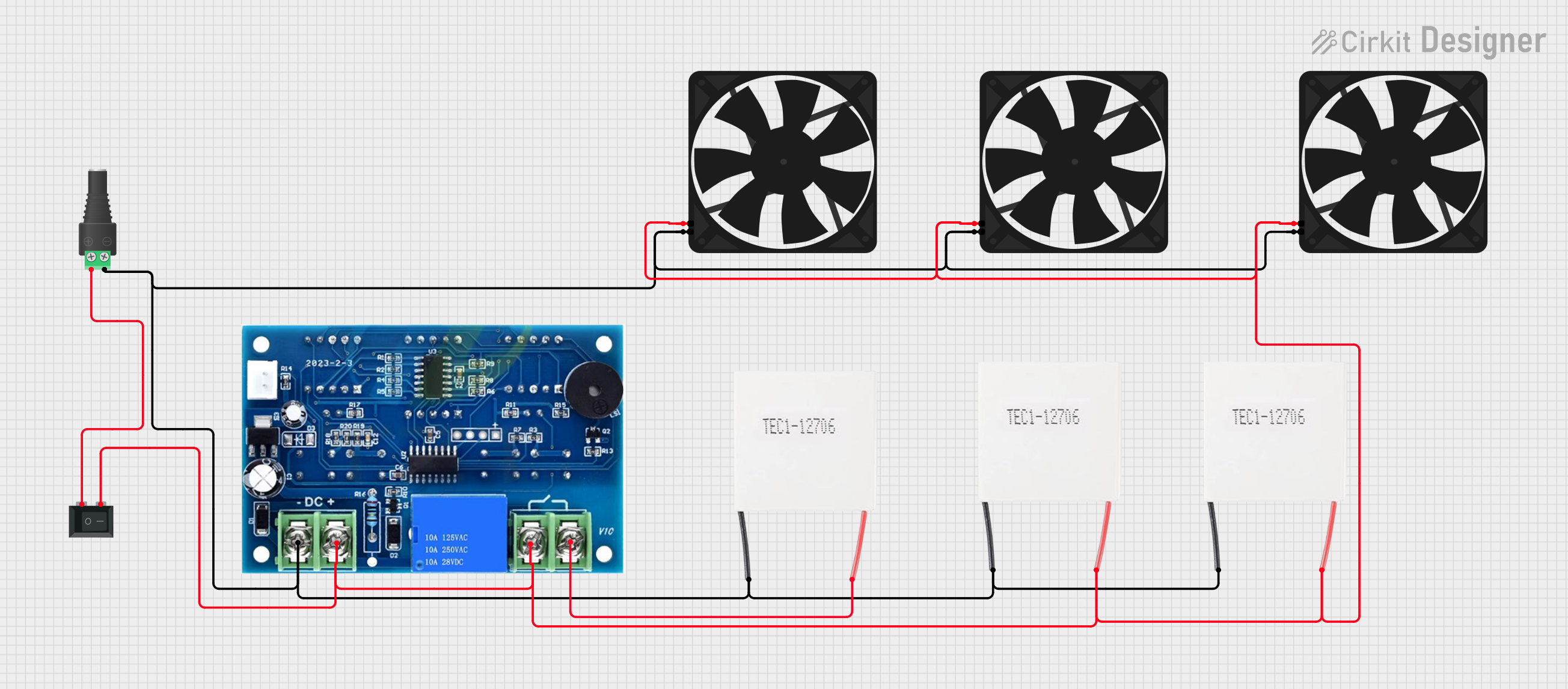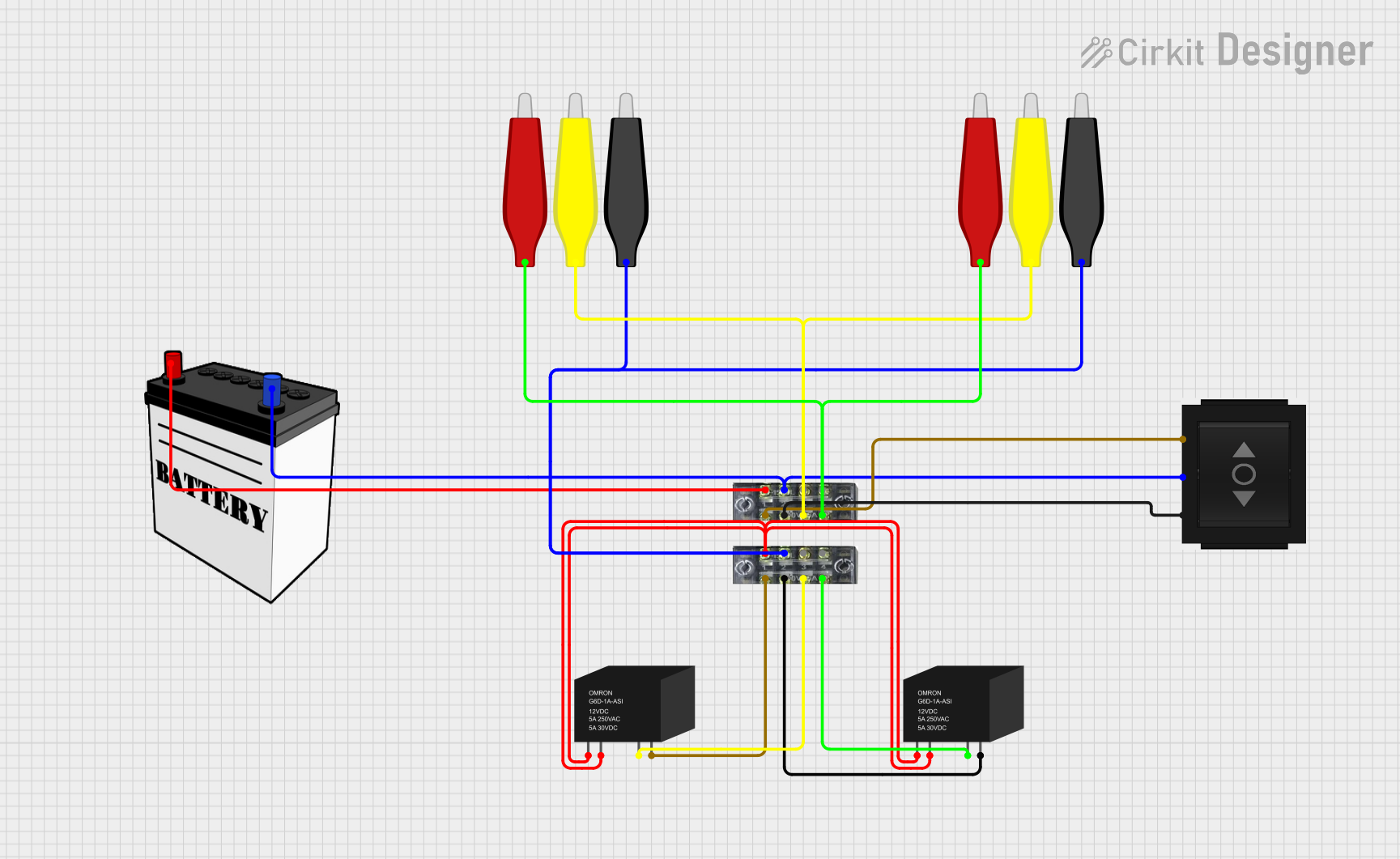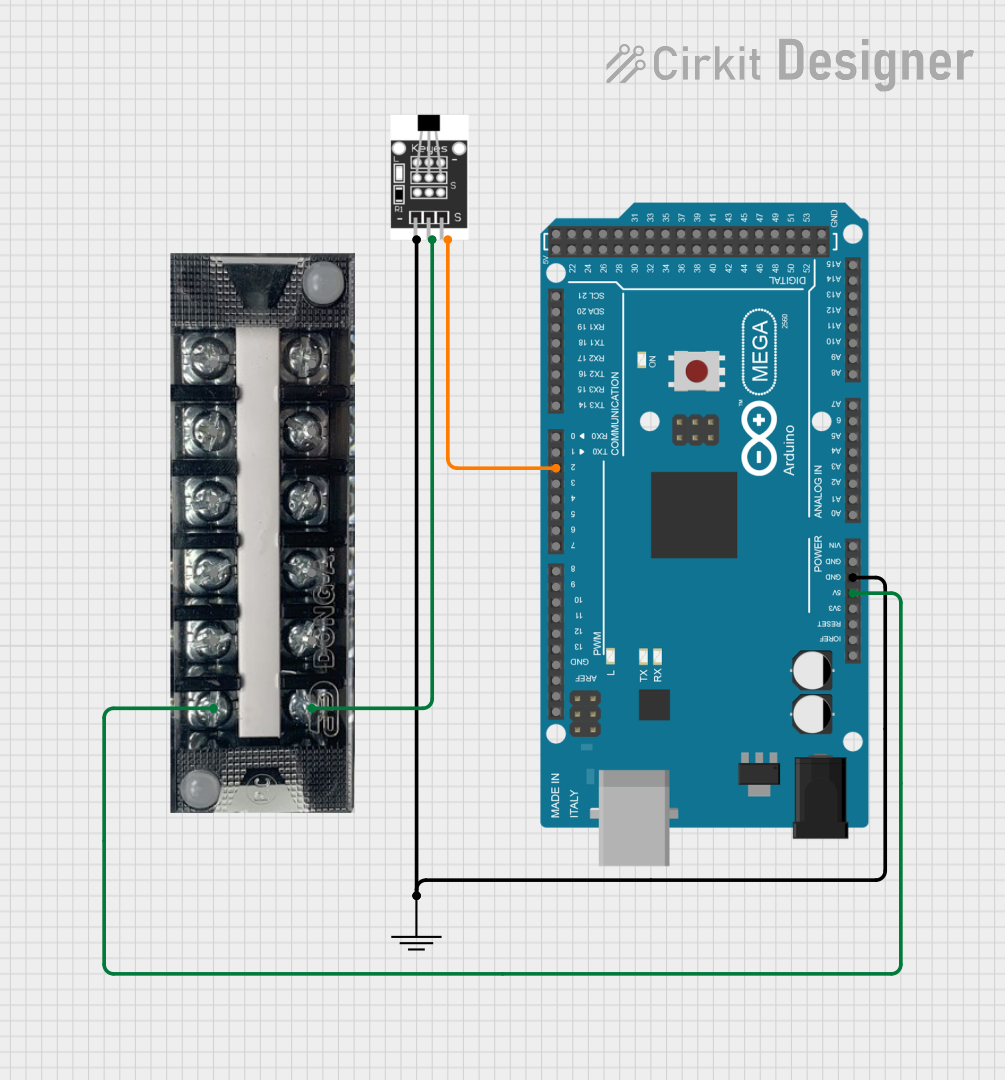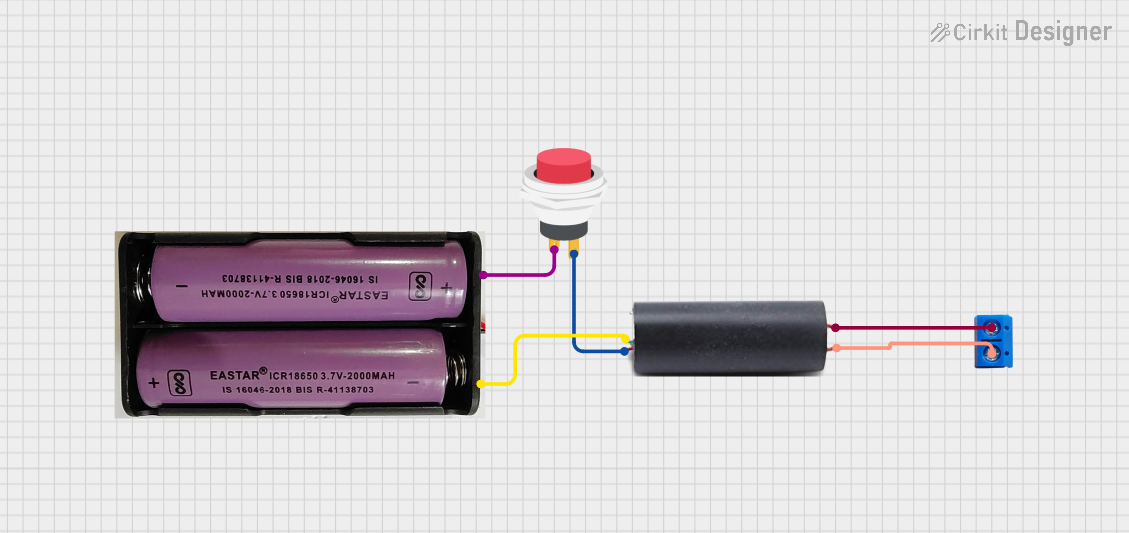
How to Use Terminal Block: Examples, Pinouts, and Specs

 Design with Terminal Block in Cirkit Designer
Design with Terminal Block in Cirkit DesignerIntroduction
A terminal block is a modular, insulated block designed to secure two or more wires together. It provides a convenient and reliable way to connect and disconnect electrical circuits, ensuring safe and organized wiring. Terminal blocks are widely used in electrical and electronic systems for their simplicity, durability, and ease of maintenance.
Explore Projects Built with Terminal Block

 Open Project in Cirkit Designer
Open Project in Cirkit Designer
 Open Project in Cirkit Designer
Open Project in Cirkit Designer
 Open Project in Cirkit Designer
Open Project in Cirkit Designer
 Open Project in Cirkit Designer
Open Project in Cirkit DesignerExplore Projects Built with Terminal Block

 Open Project in Cirkit Designer
Open Project in Cirkit Designer
 Open Project in Cirkit Designer
Open Project in Cirkit Designer
 Open Project in Cirkit Designer
Open Project in Cirkit Designer
 Open Project in Cirkit Designer
Open Project in Cirkit DesignerCommon Applications and Use Cases
- Industrial control panels and automation systems
- Power distribution in electrical enclosures
- Connecting sensors, actuators, and other devices in circuits
- Audio and speaker wiring
- Renewable energy systems, such as solar panel connections
- Prototyping and testing circuits
Technical Specifications
Key Technical Details
- Voltage Rating: Typically ranges from 12V to 600V, depending on the model
- Current Rating: Commonly supports 5A to 150A
- Wire Gauge Compatibility: Accepts wires ranging from 22 AWG to 2 AWG
- Insulation Material: Commonly made of polyamide (PA66) or other flame-retardant materials
- Mounting Options: DIN rail, panel mount, or PCB mount
- Connection Type: Screw-type, spring clamp, or push-in terminals
- Operating Temperature: -40°C to +105°C (varies by model)
Pin Configuration and Descriptions
Terminal blocks do not have "pins" in the traditional sense but instead feature connection points for wires. Below is a table describing the key parts of a typical screw-type terminal block:
| Part | Description |
|---|---|
| Terminal Screw | Secures the wire in place by tightening it against the conductive metal contact. |
| Wire Entry Point | The opening where the stripped wire is inserted. |
| Metal Contact | Conductive material (usually copper or brass) that connects the wires. |
| Insulation Housing | Non-conductive material that provides electrical insulation and structural support. |
| Mounting Mechanism | Allows the terminal block to be attached to a DIN rail, PCB, or panel. |
Usage Instructions
How to Use the Component in a Circuit
Prepare the Wires:
- Strip the insulation from the ends of the wires to expose approximately 5-10mm of the conductor.
- Ensure the exposed conductor is clean and free of damage.
Insert the Wires:
- Loosen the terminal screw to open the wire entry point.
- Insert the stripped end of the wire into the wire entry point.
Secure the Connection:
- Tighten the terminal screw to clamp the wire securely against the metal contact.
- Avoid overtightening, as this may damage the wire or the terminal block.
Verify the Connection:
- Gently tug on the wire to ensure it is firmly secured.
- Check for any exposed conductor outside the terminal block to prevent short circuits.
Mount the Terminal Block:
- Attach the terminal block to the desired mounting surface (e.g., DIN rail, PCB, or panel).
Important Considerations and Best Practices
- Wire Compatibility: Always use wires within the specified gauge range of the terminal block.
- Tightening Torque: Follow the manufacturer's recommended torque specifications to avoid damaging the terminal block or wires.
- Insulation Check: Ensure no exposed conductor is visible outside the terminal block to prevent accidental contact or short circuits.
- Environmental Conditions: Use terminal blocks rated for the operating temperature and environmental conditions of your application.
- Periodic Maintenance: Periodically inspect and retighten connections to account for potential loosening due to vibration or thermal expansion.
Example: Connecting a Terminal Block to an Arduino UNO
While terminal blocks are not directly connected to an Arduino UNO, they can be used to organize and secure connections between the Arduino and external components. Below is an example of wiring an LED circuit using a terminal block:
// Example Arduino code for controlling an LED connected via a terminal block
const int ledPin = 9; // Pin connected to the LED via the terminal block
void setup() {
pinMode(ledPin, OUTPUT); // Set the LED pin as an output
}
void loop() {
digitalWrite(ledPin, HIGH); // Turn the LED on
delay(1000); // Wait for 1 second
digitalWrite(ledPin, LOW); // Turn the LED off
delay(1000); // Wait for 1 second
}
Wiring Instructions:
- Connect the Arduino's
GNDpin to one side of the terminal block. - Connect the cathode (negative) leg of the LED to the same terminal as the
GNDwire. - Connect the Arduino's
D9pin to the other side of the terminal block. - Connect the anode (positive) leg of the LED to the same terminal as the
D9wire, with a current-limiting resistor in series.
Troubleshooting and FAQs
Common Issues and Solutions
Loose Connections:
- Issue: Wires are not securely clamped, leading to intermittent connections.
- Solution: Ensure the terminal screws are tightened to the recommended torque.
Overheating:
- Issue: Terminal block becomes hot during operation.
- Solution: Check for loose connections or wires exceeding the current rating of the terminal block.
Wire Slippage:
- Issue: Wires slip out of the terminal block.
- Solution: Verify that the wire gauge is compatible and that the screws are properly tightened.
Short Circuits:
- Issue: Exposed conductors cause unintended connections.
- Solution: Ensure all wires are fully inserted, and no conductor is exposed outside the terminal block.
FAQs
Q1: Can terminal blocks handle high-frequency signals?
A1: Yes, terminal blocks can handle high-frequency signals, but ensure the block is designed for low-resistance and low-capacitance connections to minimize signal degradation.
Q2: Are terminal blocks reusable?
A2: Yes, terminal blocks are reusable. However, ensure the screws and contacts are not damaged during repeated use.
Q3: Can I use a terminal block for both AC and DC circuits?
A3: Yes, terminal blocks can be used for both AC and DC circuits, provided they meet the voltage and current requirements of the application.
Q4: How do I choose the right terminal block for my project?
A4: Consider factors such as voltage and current ratings, wire gauge compatibility, mounting type, and environmental conditions when selecting a terminal block.